Feeding the raging monster: how Canada promotes population growth at home and abroad
 "The raging monster upon the land is population growth. In its presence, sustainability is but a fragile theoretical concept." - Edward O. Wilson, in The Diversity of Life. "In this essay, Madeline Weld uses Canada as a case study of how and why global overpopulation is inextricably bound up with mass immigration. In her words, “Canadian policies create positive feedback loops for population growth...and environmental destruction....both at home and around the world....Immigration to the West can be a fertility stimulant for people who retain pro-natalist norms and perceive an improvement in their economic prospects. Thus immigration doesn’t just increase the number of people in the high-consuming destination country, it also increases the total number of people in the world over what it would have been had the immigrants stayed put.” Tim Murray.
"The raging monster upon the land is population growth. In its presence, sustainability is but a fragile theoretical concept." - Edward O. Wilson, in The Diversity of Life. "In this essay, Madeline Weld uses Canada as a case study of how and why global overpopulation is inextricably bound up with mass immigration. In her words, “Canadian policies create positive feedback loops for population growth...and environmental destruction....both at home and around the world....Immigration to the West can be a fertility stimulant for people who retain pro-natalist norms and perceive an improvement in their economic prospects. Thus immigration doesn’t just increase the number of people in the high-consuming destination country, it also increases the total number of people in the world over what it would have been had the immigrants stayed put.” Tim Murray.
The global population situation
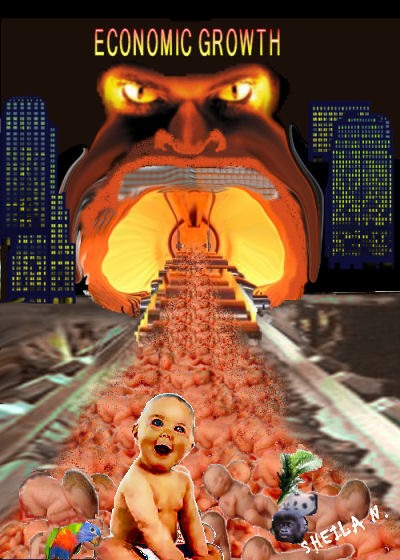
Demographers tell us that a boy born in the rural village of Uttar Pradesh in India will become the 7 billionth person on Earth on October 31st. That the date marking this occasion is Halloween seems eerily appropriate. And there's more to spook us. For a long time we had been led to believe that the global population would probably peak at 9.2 billion in 2050 and then slowly decline. But now the UN Population Division says we're looking at projections of 10, 12 or even 15 billion (1). That comforting "myth of 9 billion" was based on the assumption that fertility rates in developing countries would steadily drop to those of industrialized countries. But they are staying much higher, especially in the poorest countries, known as the "least developed countries" or LDCs in United Nations parlance. They are growing at a rate of 2.3% annually, giving them a doubling time of just over 30 years. The world as a whole is still growing at 1.2% each year, with its two UN-designated components, the "more developed regions" and "less developed regions" (of which the LDCs are a subset) growing at 0.3% and 1.4%, respectively (2). Because the rate of population growth has slowed, we have allowed ourselves to become complacent, thinking that the problem of absolute numbers would solve itself. It won't—at least not in a humane way. We are still adding close to 80 million people to the human family every year. Which explains why there are 85 million Ethiopians and 9.4 million Somalis in the famine-stalked horn of Africa right now, up from 42 and 6.5 million, respectively, in 1984, when starving Ethiopians were fed with the help of the appropriately named charity Band Aid. Projections for 2050 are 174 million and 23.5 million, respectively (2).
Whether we actually go rocketing ahead to those two-digit billions is another question entirely. Our species is in severe overshoot, a plague on our planet devastating the very resources and biodiversity it depends on. Human overshoot was enabled by cheap, plentiful, transportable, storable, and versatile oil (energy, fuel, fertilizers, pesticides, plastics and more). But it looks like we're at or very close to peak oil. The downslope to which we are inevitably heading promises to be a ride with the infamous four horsemen, given that we're also at Peak Everything: oil, soil, fisheries, and the non-renewable natural resources on which our civilization depends.
What is Canada doing to support international family planning?
In 2010, Prime Minister Stephen Harper announced his maternal health initiative as part of the G8 summit that was held in Canada that year. First reports suggested there would be no support for contraception despite the fact that pregnancy and abortion are major causes of mortality and morbidity in poor countries. In response to a public outcry, the government relented on contraception (denying that it had even intended to exclude it) but specifically ruled out support for abortion services. The Harper government has not provided any funds to the International Planned Parenthood Federation (which had previously received up to $10 million annually) for the past two years. It could be that the IPPF's statistics are just too bothersome. In the spring of 2010, while the Harper government was being elusive about contraception, the IPPF produced a report called "Contraception at a Crossroads" which documents the devastating impact of inadequate support for contraception (3). More than one-third of pregnancies in developing countries are unintended. If the unmet need for contraception were met, 52 million unintended pregnancies would be avoided each year. In 2005, 536,000 women died from pregnancy and childbirth-related causes. Unsafe abortions kill 65,000 to 70,000 women each year and leave another five million with temporary or permanent disabilities.
But inadequate support for international family planning didn't start with Harper, he simply made a bad situation worse by playing to his religious power base. The Canadian International Development Agency, which provides aid to developing countries, has never made family planning a priority and certainly never a condition for aid. It is almost impossible to get straight numbers from CIDA about how much it actually spends on contraception, which is often hidden as a component of other projects and intertwined with spending on prenatal and postnatal care, treatment of sexually transmitted infections, managing complications from (illegal) abortion, and other reproductive health matters. A CIDA population specialist in the Africa and Middle East branch, who retired a few years ago and who seemed alone in his concern that population growth needed to be addressed as an issue in itself, once told us that he estimated that family planning made up only 1% of CIDA's budget. He also told us that a population strategy for foreign aid was being developed before the International Conference on Population and Development (ICPD), held in Cairo in 1994, and was to be unveiled afterwards. To his disappointment and ours, the strategy never saw the light of day.
Developed countries in general seem to be missing the point as well. According to a Canadian Senate Committee report of February 2007, 45 years of total development aid to sub-Saharan Africa totalling $US 575 billion has left people worse off in many places than they were 50 years ago (4). The report states, "Since its inception in 1968, CIDA has spent $12.4 billion in bilateral assistance to sub-Saharan Africa, with little in the way of demonstrable results." Interestingly, while the authors address many of the problems that leave Africa mired in poverty—corrupt governments, a food supply that can't keep up with population growth, a youthful population, very high unemployment, low literacy levels, and environmental degradation—they do not mention population growth as a problem per se and do not list stemming population growth among their proposed solutions. In this regard, they are implicitly accepting the prevailing dogma that development can succeed in the absence of population control, which their own report shows has failed over the past 45 years.
Canada's inaction in the context of religious interference, social justice ideology, and wishful thinking

Probably no power on Earth has done more to subvert international family planning efforts than the Vatican, as documented in the works of Stephen Mumford (5). The Vatican has abused its "observer" status since the inception of the United Nations to make the World Health Organization drop contraception a component of its international health programs, similar to immunization, and to block any other initiatives on family planning. Its destructive intervention at the Cairo conference in 1994 was extensively covered by media reports of the day. The Vatican also interferes in family planning efforts by individual governments. In 1993, the British medical journal Lancet published a Zimbabwean doctor's criticism of Catholic and Islamic interference that thwarted access by poor women to contraception in developing countries (6). The doctor's call to all health workers in affected countries to write to the Vatican or appropriate Islamic authorities was endorsed by the journal's editors.
In 1995, not even a year after the Cairo conference, Canada abruptly cut off its longstanding support of the International Planned Parenthood Federation. Given that Canada had endorsed reproductive rights in Cairo and that then Prime Minister Jean Chrétien was known to be pro-choice, this came totally out of the blue and blindsided the IPPF. I was told by four independent sources that this sudden defunding was the result of pressure from the Vatican via the bishops of Quebec. In November of 1995, there was to be a referendum on Quebec's separation from Canada and the outcome was dicey. (In the end, the 'No' side won by a razor-thin margin.) My sources told me that the Quebec bishops told the Canadian government that they would encourage voters to vote 'Yes' to separation unless Canada defunded the IPPF, which it duly did. I can only speculate about the accuracy of the allegations of my four sources (at least three of which were very well-placed to know) but I find them credible. In any case, Canada quietly reinstated its support of the IPPF the years that followed.
But it's not just the religious right that hampers access to family planning. Surprising as it may seem, so does the feminist and social justice left. While non-governmental organizations (NGOs) of this slant declared themselves in favour of universal access to contraception and abortion at the ICPD, they derailed any direct targeting of population growth by linking such activities to indifference to women's rights, racism, and eugenics, playing right into the hands of the Vatican and its "pro-life" and Muslim allies. As a result, the weak and wishful language on population of the Programme of Action that arose from the Conference dissipated whatever political will there might have been to stem population growth. Funding for contraception as a percentage of all population assistance plummeted from 55% in 1995 to 5% in 2007, with actual spending falling from $723 to $337 million (7). At the same time, funding for the much more heartwarming objective of treating AIDS skyrocketed. According to the UNFPA, in 2008, funding for family planning was $4 billion below the target set at Cairo, while spending on AIDS was $7 billion above target (8).
A 2006 article in the Lancet states that the link between high fertility and rapid population growth, on one side, and barriers to socioeconomic development was broken at Cairo (9). It points out that rapid population growth presents a far greater threat to poverty reduction in most poor countries than does AIDS. The "grotesque distortion of priorities" in Niger is given as an example. That country faces "possible catastrophe because of rapid population growth" but holds more meetings on sterility and sexuality in elderly people than on population or family planning. The article calls for reasserting the economic rationale for family planning "that was muted at Cairo" and for breaking from "the prevailing international discourse that cloaks family planning in terms of reproductive and sexual health, a habit that obfuscates rather than clarifies priorities." It mentions the suspicions that a focus on family planning as a development intervention will arouse due to the "high-pressure semicoercive past tactics of some Asian family planning programmes," but says these suspicions need to be addressed "by emphasising that no contradiction exists between a respect for reproductive rights and a renewed sense of urgency in family-planning promotion." The article says that "[m]ost poor countries already have population policies in place but need encouragement from development agencies to implement them with conviction and commitment." What is currently missing is political will, it says.
Had the Cairo conference of 1994 achieved its objectives, there would have been no need for the UN to set the Millennium Development Goals in 2000 (10). In keeping with the blindness on population growth that is a hallmark of our times, the eight MDGs, whose target date is 2015, were silent on that very subject. A 2007 report by an all party parliamentary group in the UK stated "The evidence is overwhelming: the MDGs are difficult or impossible to achieve with the current levels of population growth in the least developed countries and regions" (11). A Save the Children policy brief of 2010 stated, "rapid population growth rates and high fertility rates correlate closely with high rates of maternal and child mortality and most of the countries that are furthest from achieving the Millennium Development Goals have high rates of population growth" (12). In a nod to reality, in 2007 the UN introduced a target of universal access by 2015 to reproductive health care (note the cautious language) under the fifth MDG of improving maternal health.
In 2011, achieving the MDGs seems as elusive as achieving the goals set in Cairo. And yet, the development cart remains firmly stationed in front of the population horse, not least with CIDA.
Population growth in Canada is also booming

While Canada is unwilling to take pragmatic steps that would make universal access to birth control a reality rather than a pious wish, its own citizens have ready access to birth control and face no restrictions on abortion under criminal law. (However, women who can't afford to travel and live in a region with inadequate service may have no access in fact if not in law.) For several decades, Canada has had a total fertility rate (TFR) below the replacement number of 2.1. And yet, its population growth rate of 1% annually is much closer to that of the less developed regions (1.4%) than of more developed regions (0.3%). How can that be?
Canada is ramping up its own population growth with a misguided policy of mass immigration, which I discussed in a 2009 article in Humanist Perspectives (13). This policy was started under Brian Mulroney's Progressive Conservative government in the early 1990s and was continued unabated by his Liberal successors and Stephen Harper's Conservative government. Of Canada's 34 million people, 7 million are immigrants (14). With Canada's low birthrate, its population would have stabilized at about 27 million with immigration closely balanced with emigration. Instead, our 34 million are projected to increase to over 44 million (2).
Despite the overwhelming evidence to the contrary, all of the parties will tell you that immigration, by which they mean the mass immigration of the last few decades, is necessary for Canada's economy. Its sacred cow status was evident in a debate of party leaders held in April, 2011, prior to Canada's federal election. No leader suggested reducing the flow of immigrants. The NDP's Jack Layton and Liberal Michael Ignatieff both seemed eager to open the door wider and bring in more "family class" relatives of immigrants. The only concern of separatist Bloc Québecois leader Gilles Duceppe was that immigrants to his province become French-speaking Quebecers. Prime Minister Harper rejected accusations that he cut back on "family unification" and boasted about keeping "a vigorous and strong and open-door immigration policy during a recession". A pre-election advertisement sponsored by the Conservative party boasted that the "Harper Conservatives Welcome Highest Number of Immigrants in History." Indeed, despite an unemployment rate of 8% or more, Canada's intake of newcomers (sum total of immigrants, refugees, temporary workers, students, and others) did actually increase under Harper. In 2010, Canada took in 281,000 immigrants, another 182,000 as temporary foreign workers, and is also host to 218,000 foreign students (15). It should be noted that temporary workers are often anything but temporary. If successful in Canada, they are a preferred source of immigrants by the government. Green Party leader (and, after the election, its only MP) Elizabeth May was excluded from the debate but praises Canada's "great multicultural experiment" and has never advocated a reduction in immigration.
In Canada, the mass intake of immigrants as essential to our economy intertwined with the embrace of multiculturalism has become sacred doctrine by the ruling class of politicians and liberal elites. The reality is that many recent immigrants fare poorly in the Canadian economy and, according to a study published this year, receive $18 to $23 billion more in government assistance each year than they pay in taxes (16). While that study focuses only on the economic cost of Canada's policy of mass immigration, there are also, as discussed below, significant environment impacts and social costs arising from poverty and lack of integration.
How Canadian policies create positive feedback loops for population growth
Canada is doing far too little to support international family planning and is subverting its own low birthrate with a policy of mass immigration. The bogus economic arguments used to justify this insanity were discussed in my earlier article. Yet some argue for this policy from an ecological perspective. Most of the world's "biodiversity hotspots" are in poor countries, the argument goes, and by alleviating population pressure there, we are helping to protect their ecology, which is more critical than Canada's. Other people favour the mass intake on social justice grounds. With its high per capita consumption and greenhouse gas production, Canada is a major contributor to climate change and should compensate by taking in those fleeing the environmental consequences, they say. In reality, Canada's high intake of immigrants drives population growth and environmental destruction both at home and around the world.
Inadequate support for family planning drives population growth abroad:
It is obvious how inadequate funding for contraception results in an inadequate supply. Hundreds of millions of poor women who do not want to become pregnant are not using birth control simply because they can't get it. But supply is just one side of the problem. The preference for large families is another. The number of children desired is declining in most of the developing world but remains very high in some regions. In western and middle sub-Saharan Africa, an average of 6.0 children are still desired. In southern and eastern Africa, the mean number desired is 4.5. In contrast, in Asia and North Africa the average is 2.9 and in Latin America and the Caribbean, 3.0 (17). By refusing to endorse national or international initiatives to promote smaller families and proclaiming that couples should "freely and responsibly" choose the number and spacing of their children, the Cairo conference's Program of Action left poor women at the mercy of cultural norms favouring pronatalism, patriarchy, and the subjugation of women. The high birth rates that continue almost unabated in the poorest countries are accompanied by a falling probability of a decent standard of living. This creates pressure for migration both to the West and to neighbouring countries that are often poor themselves. At the time of writing, starving Somali refugees are streaming into refugee camps in neighbouring Kenya, which is not well equipped to handle them.
The examples of Thailand, the Indian state of Kerala, and Bangladesh illustrate that government policies can cause birth rates to fall dramatically without the need to resort to the sort of coercion used by China and invoked by religious and social justice opponents to blacken the very idea of population control. The example of Bangladesh illustrates that birth rates can fall dramatically in poor countries before they have achieved a substantial level of wealth. On the flip side, the skyrocketing populations of oil-rich Arab countries illustrate that, contrary to the demographic transition theory, declines in population do not automatically follow an increase in wealth.
Canada should make contraception an integral part of its foreign aid and target countries that have implemented effective and ethical policies of population control.
Canada's immigration policy drives population growth and environmental degradation at home:
In Virginia Abernethy's fertility opportunity hypothesis, which is supported by many empirical examples, couples often have more children when they perceive that their economic opportunities are expanding (19). This was seen in the postwar baby boom and is evident in oil-rich Arab countries. Immigration to the West can be a fertility stimulant for people who retain pronatalist norms and perceive an improvement in their economic prospects. Thus immigration doesn't just increase the number of people in the high-consuming destination country, it also increases the total number of people in the world over what it would have been had the immigrants stayed put.
Mass migration has had a profound impact on Canada's environment. Most immigrants settle in Toronto, Vancouver, and Montreal, and all but a handful in metropolitan areas. Only 7% of Canada's land surface is suitable for agriculture, and a much smaller proportion is "class 1". In Ontario, 18% of class I agricultural had been converted to urban uses by 1996 (20). We are also destroying much of the unique fruit growing farmland of the Niagara Peninsula in Ontario and the Okanagan Valley of British Columbia. In addition to paving over our food supply, we are devastating our ecosystems, particularly in the growth belts of the BC lower mainland, the golden horseshoe region of Ontario, and the Great Lakes?St. Laurence Basin.
A 2008 report by the US Center for Immigration Studies showed that, on average, immigration to the US increases a migrant's greenhouse gas production by a factor of four, even with a relatively low standard of living in the US (18). The values for Canada would be similar or possibly even higher, given our colder climate and greater distances. As far as the atmosphere is concerned, immigration to Canada turns low resource and energy consumers and greenhouse gas emitters into high consumers and emitters.
You might think that environmental groups and the Green party would squawk about driving up the population of one of the highest consuming and greenhouse gas-producing countries in the world while destroying its farmland and wildlife habitat. Unfortunately, you'd be wrong. The environmental movement tends to be silent on the population growth that undermines all efforts at conservation, reducing consumption, and capping greenhouse gas emissions. The simple-minded mantra of the mainstream environmental movement can be summed up as, "It's not the numbers, it's how we live." As Paul Ehrlich has said, this is like focussing only on one side of a rectangle when calculating its area.
While politicians of all stripes pay lip service to the environment, they all also endorse mass migration to Canada. Not one of them has come up with a strategy to reduce our ecological footprint in the face of an ever-increasing number of feet. Nor will they, because that is impossible.
Canada's immigration policy drives population growth in the countries of origin:
Not surprisingly, many people are eager to leave the deteriorating conditions in poor countries. A Gallup survey conducted in 2010, based on interviews with over 347,000 adults in 148 countries representing 95% of the world's population, found that some poor countries would see their adult (15 years +) populations reduced by half if everyone who wanted to leave could do so (21). Haiti would see its adult population fall by 56%, Ethiopia, Nigeria, and "Somaliland Region" by 46%, the Philippines by 22%, and Egypt by 8%. If everyone who wanted to go to a specific destination were able to do so, Canada's population would increase by 160%, while those of New Zealand, Switzerland, and Australia would grow by 184%, 150%, and 148%, respectively. The hypothetical population change accounted both for those who would leave and who would arrive. The ranking of countries from the most popular would-be destination (Singapore, +219%) to the one most eagerly deserted (Sierra Leone, ?56%) reveals a great desire to leave countries with rapid population growth and high rates of poverty. Yet, under current conditions, the benefit of mass emigration for poor countries would be fleeting. In the absence of culture change, their high growth rates would quickly replace the emigrants, economic inefficiency and corrupt government would continue and things would soon be right back to where they were. At the same time, the destination countries would be swamped and rendered dysfunctional.
Data on remittances sent by emigrants to their countries of origin reveal the extent to which emigration allows business as usual to continue back home. Remittances prop up unsustainable population growth in inefficient economies and let corrupt governments that fail to provide adequate services and infrastructure for their people off the hook. In 2010, there were about 215 million international migrants (double the number in 1985), and the remittances they sent home, about $325 billion, were 3 times larger than total official development aid (14, 22). In 24 countries, remittances were equal to more than 10% of the GDP; in some cases, over one-third. Because informal channels are often used and the amounts transmitted not recorded, the actual remittance flow is believed to be substantially greater than official numbers indicate.
The extent to which governments depend on remittances to ease the pressure on themselves is illustrated by the Philippines, whose government calls its emigrants "heroes of the nation." No wonder. At its current growth rate of 1.8% annually, the Philippine's population of 93.6 million will balloon to 146.2 million by 2050 (2). The Philippines sends over one million workers abroad each year and receives remittances equivalent to 10% of the country's economic output (22). As it happens, the Philippines are now Canada's top source of immigrants and Filipinos in Canada send back $1.5 billion annually (23). For the Vatican, this is a win-win situation. While devout politicians are trying to kill an initiative by the Philippine government to (finally!) make contraception available to the poor, Filipino immigrants to Canada, most of them Catholic, help boost the flagging fortunes of the Roman Catholic church here. Canada's role is reminiscent to that of an enabler.
What is true for the Philippines is true, to a greater or lesser extent, for many developing countries. About one-tenth of Egyptians and Haitians also live outside of their country of birth. While these developing countries catch themselves some breathing room, the people they 'export' compete with workers in the receiving countries, especially those at the lower end of the economic scale and young people looking for entry level jobs. This is not a problem for the businesses that benefit from cheap labour, developers, bankers, or the "immigration industry"?lawyers, consultants, settlement agencies and others. Politicians in receiving countries can also benefit, through both financial support from economic interests and votes from ethnic blocs. Apparently, some politicians, including Harriet Harman, deputy leader of the Labour Party in the UK, see nothing bizarre in bringing in immigrants who receive welfare and then send remittances to their country of origin, calling them heroic. Ms Harman also derided "those who said we should look after our own first" (24). Judging by their immigration policies, this attitude seems to be shared by politicians on the UK, Canada, Australia, and the US.
Mass immigration, security, and social cohesion
Mass immigration has impacts on security. Pakistan has long been one of the top ten source countries of immigrants to Canada. Both it and neighbouring Afghanistan are terrorist havens. Of the 20,000 migrants who came Canada from these two countries between 2001 and 2006, only 1 in 10 were properly vetted (25). This lack of due diligence, along with Canada's generous policy of family reunification, makes it not at all improbable that we will bring in someone eager to destroy us. Our misguided policy of multiculturalism works against the integration of immigrants whose value system is based in religion and tribalism and is often antithetical to Western values. Newcomers from such cultures tend to cluster in ethnic enclaves where these values are retained and reinforced with marriage partners imported from the homeland. In 1981, there were 6 ethnic enclaves in Canada (Toronto, Montreal, and Vancouver), where ethnic enclaves are defined as communities with 30% or more of the population from one visible minority group; in 2001, there were 254 (26). Not surprisingly, Canada has produced some homegrown would-be terrorists, including Momin Khawadja and some of the Toronto 18, along with the immigrant variety, such as Ahmed Rassam.
Canada is not alone in its ideological embrace of multiculturalism. Several European countries have brought in large numbers of migrants from very different cultural backgrounds with no desire to integrate. As in Canada, they often bring marriage partners from the home country, which, along with a high birth rate, has created ethnic enclaves existing as parallel societies within the host country, some becoming no-go zones for the native population. Three European leaders (France's Sarkozy, Germany's Merkel, and the UK's Cameron) have declared multiculturalism to be a failure.
At the risk of appearing to engage in "Schadenfreude", the recent riots in Britain almost seem like the just desserts of a country that has engaged in a policy of mass immigration starting in 1997 under Labour Party leadership, in order to, as confessed last year by Andrew Neather, former Labour Party speechwriter, "make the UK truly multicultural" and "rub the Right's nose in diversity and render their arguments out of date," with those who expressed reservations dismissed with utter contempt as racists (27). According to US sociologist Jack Goldstone who spoke on BBC radio's "4's More or Less" program on August 12 and analyzed the causes of the recreational thuggery and looting in several UK cities, there is a clear link through history between rapid population growth and social unrest, seen in events like the French and Russian revolutions and now in pockets of society with immigration-driven population growth and many young people unable to find jobs. In the London suburb of Tottenham where the riots started, Goldstone found that the population had grown by nearly 8%, three times the UK average, between 2000 and 2005, with a high percentage of new immigrants and young people (28). David Cameron's Conservative Party appears to be reaping what Labour has sown, yet has been timid about reducing immigration, no doubt hampered by the spectre of accusations of racism.
Population growth and conflict

As evidenced by the violence in many struggling countries (e.g., Sudan, Afghanistan, Pakistan, Haiti), the concept of human rights falls by the wayside when too many humans are fighting over dwindling resources. Each year, the Fund for Peace ranks countries according to their "vulnerability to violent internal conflict and societal deterioration." The Fund's Failed State Index, published in Foreign Policy, is based on 12 indicators, each with scores of 1 (best) to 10 (worst), aggregated into a single score. A country with a score of 120 would be falling apart by every measure. In the first listing in 2005, only 7 countries had scores of 100 or more. In 2010, there were 15 (29). The higher scores for countries at the top and the doubling of countries with scores of 100 or more indicate that state failure is spreading and deepening.
Ranking on the Failed State Index is closely associated with rapid population growth (30). For 2010, 15 of the top 20 failed states had population growth rates between 2 and 4% a year (i.e., doubling times of 17 to 35 years). In 14 of the top 20, at least 40% of the population was under 15, an indicator of likely future instability. Nineteen of the top 20 failing states depend on the UN's World Food Programme for food. The deterioration of economic infrastructure—roads, power, water, and sewage systems— is another feature of failing states. And all of the top 20 countries are depleting their natural assets, such as forests, grasslands, soils, and aquifers, to sustain their rapidly growing populations. Failing states are highly likely to experience a breakdown in law and order and the loss of personal security. The conflicts in a failing state often spread to neighbouring countries, as when the genocide in Rwanda spread to the Democratic Republic of the Congo (DRC), where at least five million people lost their lives. In these situations, women often face vicious discrimination and brutalization. Not coincidentally, the DRC is now known as the rape capital of the world.
The failure of Canada and of the international community in general to adequately support family planning therefore contributes to conflict and war.
Conclusion:
The human population is in overshoot and indications are that it is heading for a crash. Focusing on development while ignoring population growth has failed and will continue to fail, as shown by the increasing number of failing states. By not making population control an integral part of an overall development strategy, Canada is contributing to global population growth and conflict. By driving population growth at home with a policy of mass immigration based on false economic arguments, Canada is destroying its own environment and long-term agricultural capacity as well as turning low consumers and greenhouse gas producers to high consumers and emitters. Because fertility rates often increase when people perceive more economic opportunity, immigration to Canada could be contributing to global population growth. Remittances from immigrants in developed countries constitute a large part of the GDP of many developing countries. These remittances help prop up inefficient economies and buy time for corrupt governments, allowing business as usual, including high fertility rates, to continue for longer.
Canada's policies are making a bad situation worse. Canada should seek to stabilize then reduce its own population. Given our low birthrate, this could easily be achieved by drastically reducing immigration levels. Canada should make international family planning a priority in its foreign aid and make ethical and efficient population control policies a condition for aid in countries with high fertility rates.
References:
(1) United Nations Population Division. 2011. World Population Prospects. The 2010 Revision. Press Release, 3 May 2011.
http://esa.un.org/unpd/wpp/OtherInformation/Press_Release_WPP2010.pdf
(2) UNFPA. 2010. State of World Population 2010. New York: United Nations Population Fund.
Demographic data is in the tables at the end of the document.
(3) International Planned Parenthood Federation. 2010. Contraception at a Crossroads. http://www.ippf.org/NR/rdonlyres/44A072FB-E35E-4BD7-8983-BC0BB91682DA/0/ContraceptionAtaCrossroads.pdf.
(4) Senate of Canada. The Standing Senate Committee on Foreign Affairs and International Trade. 2007. Overcoming 40 years of failure: a new road map for sub-Saharan Africa. http://www.parl.gc.ca/Content/SEN/Committee/391/fore/rep/repafrifeb07-e.pdf
(5) Stephen Mumford's books include: American Democracy and the Vatican: Population Growth and National Security (Amherst, New York: Humanist Press, 1984); The Pope and the New Apocalypse: The Holy War Against Family Planning (Research Triangle Park, North Carolina: Center for Research on Population and Security, 1986); and The Life and Death of NSSM 200: How the Destruction of Political Will Doomed a U.S. Population Policy (Research Triangle Park, North Carolina: Center for Research on Population and Security, 1996). Mumford's CV and links to some articles can be seen at http://www.population-security.org/mumford_bio.html.
(6) Verkuyl, D.A.A. 1993. Two world religions and family planning. The Lancet 342(8869): 473?475.
(7) Deen, T. 2009. Global financial crisis threatens family planning. Inter Press Service News, April 1. http://ipsnews.net/news.asp?idnews=46357
(8) UNFPA and PRB. 2009. Healthy Expectations. International Conference on Population and Development, 15 years later. New York: United Nations Population Fund and Washington DC: Population Reference Bureau http://www.unfpa.org/public/home/publications/healthyexpectations
(9) Cleland, J, S Bernstein, A Ezeh, A Faundes, A Glasier, J Innis. 2006. Sexual and Reproductive Health 3. Family planning: the unfinished agenda. Lancet 368: 1810?1827.
(10) See information about the Millennium Development Goals here http://www.beta.undp.org/undp/en/home/mdgoverview.html
(11) Report of Hearings by the All Party Parliamentary Group on Population, Development and Reproductive Health (UK). January, 2007. The Return of the Population Growth Factor. Its Impact on the Millennium Development Goals. < http://www.appg-popdevrh.org.uk/Publications/Population%20Hearings/Summary%20Update%2009%20FINAL.pdf
(12) Save the Children policy brief from March 2010 can be seen at http://www.savethechildren.org.uk/en/54_10773.htm.
(13) Weld, M. 2009. Canada’s policy of mass immigration: hoary myths and unasked questions. Humanist Perspectives 41(4): 22?29.
(14) World Bank. 2011. Migration and Remittances Factbook 2011. 2nd Edition. http://issuu.com/world.bank.publications/docs/978082138218
(15) Bissett, J. 2011. Immigration isn't as beneficial as politicians claim. Calgary Herald, May 20. http://www.calgaryherald.com/business/Immigration+beneficial+politicians+claim/4814381/story.html (James Bissett is a retired ambassador and the former executive director of the Canadian Immigration Service.)
(16) Grubel, H. and P. Grady. 2011. Immigration and the Canadian Welfare State. Fraser Institute, Vancouver. http://global-economics.ca/immigration-and-the-canadian-welfare-state-2011.pdf
(17) Westoff , CF. 2010. Desired Number of Children: 2000-2008.US AID Demographic and Health Surveys Comparative Reports No. 25. http://www.measuredhs.com/pubs/pub_details.cfm?ID=987
(18) Kolankiewicz, L. and S. Camarota. 2008. Immigration to the United States and worldwide greenhouse gas emissions. Washington DC: Center for Immigration Studies. http://www.cis.org/GreenhouseGasEmissions
(19) Abernethy, VD. 1999. A Darwinian account of the fertility opportunity hypothesis. Population and Environment 21(2): 119?148. http://www.springerlink.com/content/t54243kh15r60775/
(20) Statistics Canada. 2001.Urban Consumption of Agricultural Land. Rural and Small Town Canada Analysis Bulletin Vol. 3, No. 2 (September 2001), Catalogue no. 21-006-XIE.
http://www.statcan.gc.ca/pub/21-006-x/21-006-x2001002-eng.pdf
(21) Esipova, N, and J. Ray. 2010, August 20. Migration could triple populations in some wealthy nations. www.prb.org/articles/2011/international-migration-recession-remitttances.aspx
(23) Friesen, J. 2011. The Philippines now Canada's top source of immigrants. Globe and Mail, March 18. www.theglobeandmail.com/news/national/the-philippines-now-canadas-top-source-of-immigrants/article1948315/
(24) Walters, S. 2010. Harriet Harman praises 'hero' immigrants who send welfare handouts home. Daily Mail (December 12). < http://www.dailymail.co.uk/news/article-1337876/Harman-praises-hero-immigrants-send-welfare-handouts-home.html#
(25) Stoffman, D. Truths and Myths about Immigration. In: Moens, A. and M. Collacott (Eds.) 2008. Immigration Policy and the Terrorist Threat in Canada and the United States. Fraser Institute. http://www.thedivineconspiracy.org/Z5220J.pdf
(26) Hou, F. 2004. Recent immigration and the formation of visible minority neighbourhoods in Canada's large cities. Statistics Canada. Catalogue no. 11F0019MIE — No. 221 http://www.statcan.gc.ca/pub/11f0019m/11f0019m2004221-eng.pdf
(27) Philips, M. 2010. The secret plot to destroy Britain’s identity. Daily Mail (February 24). http://www.melaniephillips.com/articles-new/?p=718
(28) Information about the BBC report is from an email of August 15, 2011, from my population activist colleague Brian McGavin in the UK.
(29) Failed State Index 2010. See The Failed State Index is created by Foreign Policy and the Fund for Peace
(30) Brown, L. 2011. World on the edge: how to prevent environmental and economic collapse. Chapter 7. Mounting stresses, failing states. Earth Policy Institute.

 In the TV debate of April 12, 2011, the leaders of Canada's four parties with parliamentary seats demonstrated that beneath the phony left-right dichotomies, parliament is ideologically monolithic in the most important sense. All of them believe in the necessity, desirability and possibility of continuing economic growth, and that immigration-driven population growth is its necessary concomitant and driver. But how could it be otherwise? Politicians do not effect change, they respond to it. And the environmental movement---and its political arm in the NDP and the Green Party, has done nothing to create a constituency of awareness that population growth in Canada is unsustainable, an awareness that if widely shared, would compel political parties and their leaders to address it. Most culpable is David Suzuki, who could move mountains if he would publicly say what he has said of Australia: that in relation to our resources, we are in serious population overshoot.
In the TV debate of April 12, 2011, the leaders of Canada's four parties with parliamentary seats demonstrated that beneath the phony left-right dichotomies, parliament is ideologically monolithic in the most important sense. All of them believe in the necessity, desirability and possibility of continuing economic growth, and that immigration-driven population growth is its necessary concomitant and driver. But how could it be otherwise? Politicians do not effect change, they respond to it. And the environmental movement---and its political arm in the NDP and the Green Party, has done nothing to create a constituency of awareness that population growth in Canada is unsustainable, an awareness that if widely shared, would compel political parties and their leaders to address it. Most culpable is David Suzuki, who could move mountains if he would publicly say what he has said of Australia: that in relation to our resources, we are in serious population overshoot. 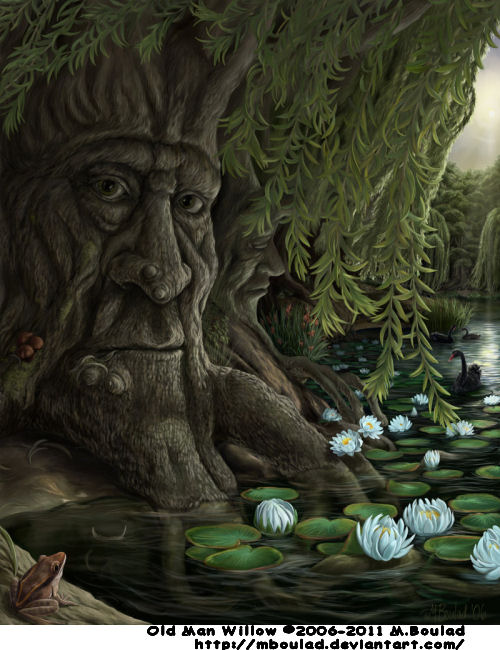
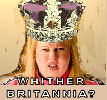 Unstoppable waves of migrants, overcrowding, displaced workers
Unstoppable waves of migrants, overcrowding, displaced workers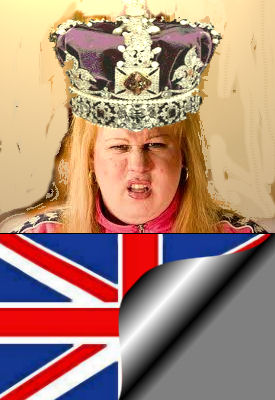

 There is an unrelenting media campaign to tell Canadians that we must grow our population. We need more babies and more immigrants or very bad things will happen. But there are voices that question this assumption. They are heard on the streets, in the pubs and at the dining room table. But they are seldom heard in the media. Especially not on the airways of the CBC, that vehicle of growthist PC propaganda which all taxpayers are forced to endow.
There is an unrelenting media campaign to tell Canadians that we must grow our population. We need more babies and more immigrants or very bad things will happen. But there are voices that question this assumption. They are heard on the streets, in the pubs and at the dining room table. But they are seldom heard in the media. Especially not on the airways of the CBC, that vehicle of growthist PC propaganda which all taxpayers are forced to endow. 




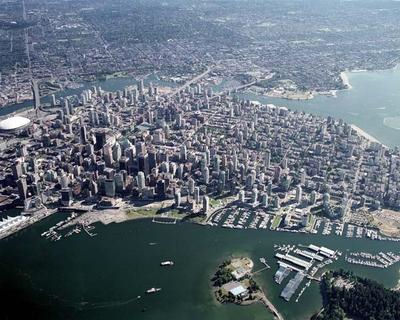
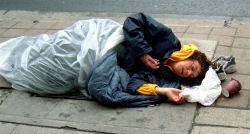 Photo: Uknown homeless female Canadian citizen & Vancouver street resident.
Photo: Uknown homeless female Canadian citizen & Vancouver street resident. 'For many in this city that prides itself on its social contract,
'For many in this city that prides itself on its social contract, 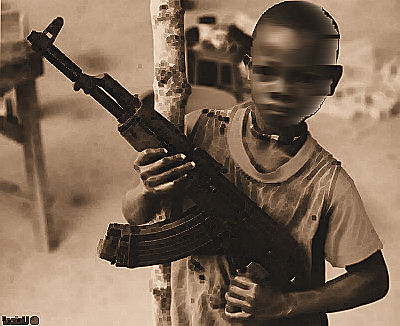
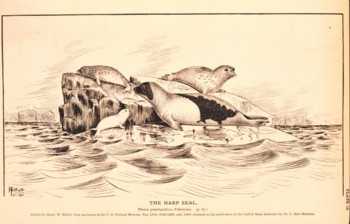
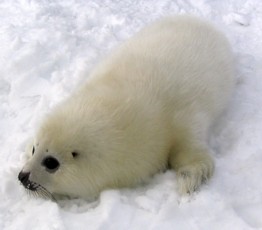
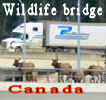 Where did the photograph come from and was this really a bridge built for animals? Update inside. Original teaser: Majestic picture inside. They had to build the animals their own crossing (especially the elk) because that was where the natural crossing was and after the highway was built there were far too many accidents. Pity Australia's developers and road makers seem to be too mean to do this kind of work for animals, although there are a few, small exceptions. Let's hope that Australia will follow this example. Unfortunately, on population policy, Canada is nearly as bad as Australia.
Where did the photograph come from and was this really a bridge built for animals? Update inside. Original teaser: Majestic picture inside. They had to build the animals their own crossing (especially the elk) because that was where the natural crossing was and after the highway was built there were far too many accidents. Pity Australia's developers and road makers seem to be too mean to do this kind of work for animals, although there are a few, small exceptions. Let's hope that Australia will follow this example. Unfortunately, on population policy, Canada is nearly as bad as Australia.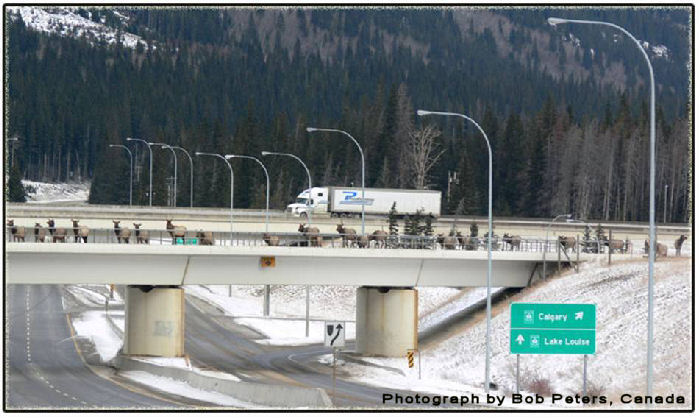
 This comment, by Canadian Tim Murray, was originally posted to the
This comment, by Canadian Tim Murray, was originally posted to the 
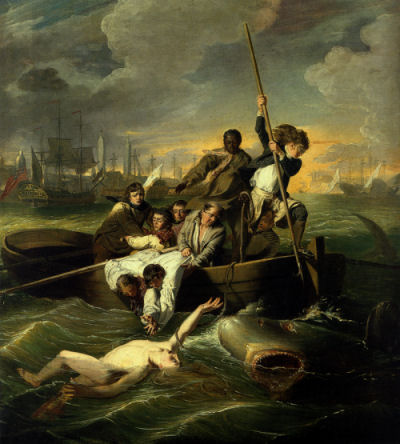

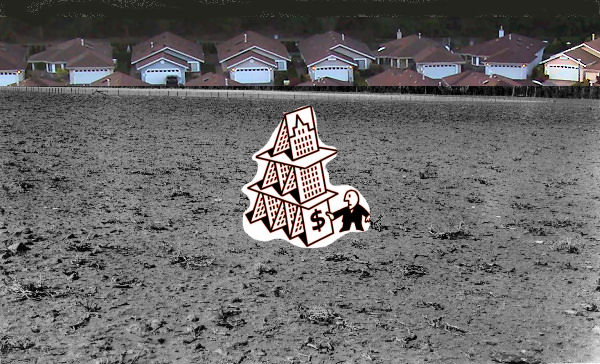

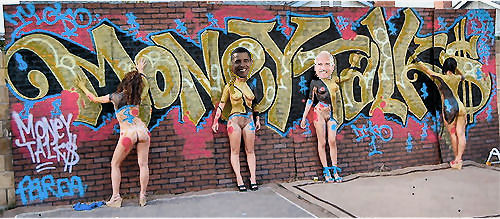
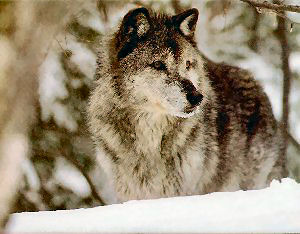
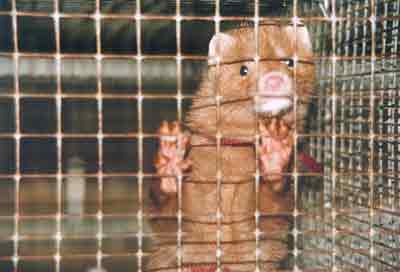 Sea-mink Extinguished by fur-trappers from
Sea-mink Extinguished by fur-trappers from
Recent comments